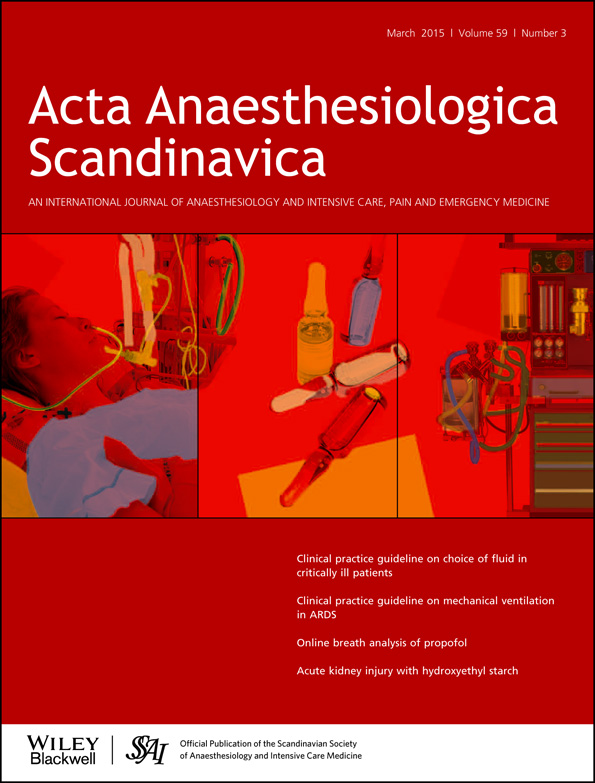Total intravenous general anaesthesia vs. spinal anaesthesia for total hip arthroplasty: a randomised, controlled trial
Conflicts of interest:
None declared.
Funding:
The study was supported with institutional grants
Abstract
Background
The choice of anaesthetic technique for patients undergoing joint arthroplasty is debatable. The hypothesis of this study was that general anaesthesia would generate a more favourable recovery profile than spinal anaesthesia.
Methods
We randomly allocated 120 patients to either intrathecal bupivacaine or general anaesthesia with target-controlled infusion of remifentanil and propofol. Length of hospital stay assessed as meeting discharge criteria was the primary outcome parameter. Other outcome parameters were actual time of discharge, pain, use of rescue pain medication, blood loss, length of stay in the post-operative care unit, dizziness, post-operative nausea, need of urinary catheterisation and patient satisfaction.
Results
General anaesthesia resulted in slightly reduced length of hospital stay (26 vs. 30 h, P = 0.004), less nausea (P = 0.043) and dizziness (P < 0.001). General anaesthesia patients had higher pain scores during the first two post-operative hours (P < 0.001) but lower after 6 h compared with the spinal anaesthesia group (P < 0.01 and P < 0.05). General anaesthesia patients had better orthostatic function compared with spinal anaesthesia patients (P = 0.008). Patients in the spinal anaesthesia group fulfilled the discharge criteria from the post-operative care unit earlier compared with the general anaesthesia patients (P = 0.004). General anaesthesia patients requested a change in the method of anaesthesia for a subsequent operation less often than the spinal anaesthesia patients (5 vs. 13, P = 0.022).
Conclusion
General anaesthesia resulted in a more favourable recovery profile compared with spinal anaesthesia.




